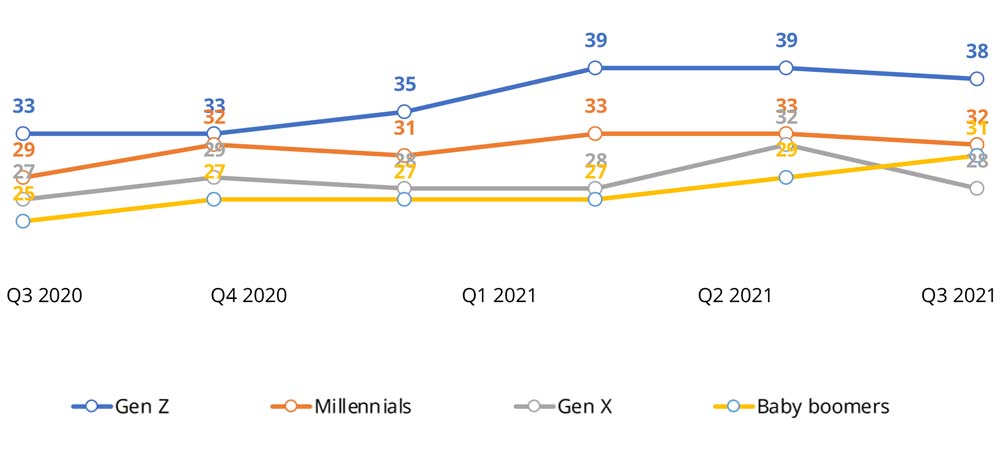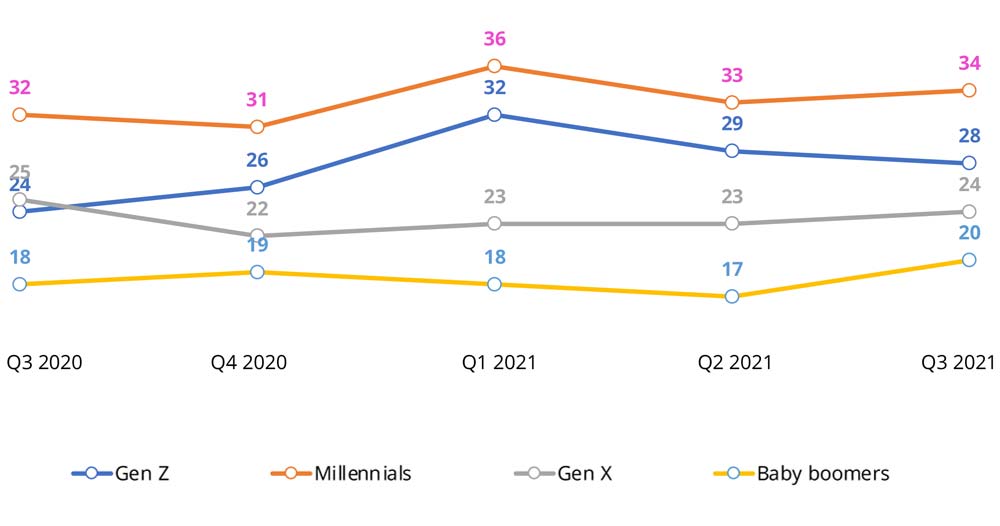With the phenomenal growth of the no-and low-alcohol category, brands operating within the alcoholic drinks sector need to move fast to address rapidly rising consumer demand. There is a lot of immediate work to be done to re-think product portfolios; brands know that they cannot afford to lag behind, yet many do not have the internal resource to create meaningful and actionable insight to drive new product development and associated marketing strategies.
It’s not just last month’s Dry January initiatives sparking sales of low- and no-alcohol beverages: over the last few years, new health-conscious and mindful drinkers have helped spur the impressive growth of the category. Consumers’ rising interest in health and wellness is shaping long-term market movements and is likely to drive the continuous growth of the low- and non-alcoholic beverage sector, as well as a ‘better, not more’ approach to alcohol.
The pandemic turned us around in more ways than one; it got people thinking about their health. Alcohol has traditionally been at the heart of everyone’s idea of a good time, but these attitudes are changing fast. The health- conscious consumer is evolving from faddish and fussy to mainstream and cool; many of us now want to eat healthier foods, cutting meat products not only for our own health but also for the environment and animal welfare. This changing lifestyle choice is also moving into the drinks space. People want cleaner drinks, less sugar, less alcohol and more provenance when it comes to knowing what’s in their glass.
Consumers are being more intentional about when they drink alcohol and when they choose to abstain, and are seeking to lower the amount of alcohol they drink. Many of us are now waking up to the fact that drinking as much as we do may not be sustainable.
Whilst many consumers have increased their consumption of alcohol since the pandemic started, a significant proportion have reduced, spiking amongst Gen Zs.
This new evolving attitude that many of us are embracing is known as ‘sobercurious’, and embraces techniques of mindful drinking, exploring elements of a booze-free lifestyle without fully abstaining. We want to become more intentional about our relationship with drinking, instead of seeing alcohol as a habit or a crutch. Mindful drinking is all about bringing awareness to our behaviours in terms of our decision to drink alcohol. Many of the growing new genre of ‘sobercurious’ consumers are average drinkers, looking to break up their alcohol consumption, pacing themselves across a week, with alcohol-free days, or paying close attention to why, where and when we are drawn to drinking.
Enter the ‘Low2No’ alcohol category. Responding to the unprecedented rise in demand for alternatives to alcohol, existing brands and new entrants are swamping the non-alcohol category with new product launches. Brands are investing heavily to introduce innovative new products, with many well-established brands developing no- and low alcohol versions of their beer, wines and spirits.
The ultimate challenge is for brands to differentiate themselves by establishing meaningful connections with consumers, especially in terms of taste, price, packaging and education.
There is also evidence that the future may be less alcohol oriented, seeing that Millennials and Gen Zs are less eager drinkers than the older generations: 38% of Millennials and 32% of Gen Zs say they drink alcohol less than once a month.
Drinking less alcohol is gradually on the rise
% of UK consumers 18+ who drink alcohol less than once a month

- Source: GWI UK Q2 2020 – Q3 2021 Base: Per wave – 10,000 UK internet users aged 18+, of which 1,800 are Gen Zs, 3,100 millennials, 4,200 are Gen X, and 1,400 are baby boomers
A report by Numerator (September 2021), concludes that alcohol is less appealing to Gen Z consumers due to concerns about alcohol’s impact on their mood, level of alertness, and even their image on social media.
Even though the low- and no-alcohol category accounts for only 2% of the total alcoholic drinks sector in the UK, the category has grown by 51% in the year to February 2021. (Kantar)
Gen Zs and millennials are leading the push for alternative beverages. Non-alcoholic beer is gaining steam and all signs point to these trends being far more than just a fad.
Non-alcoholic beer consumption
% of UK consumers 18+ who drink non-alcoholic beer

- Source: GWI UK Q2 2020 – Q3 2021 Base: Per wave – 10,000 UK internet users aged 18+, of which 1,800 are Gen Zs, 3,100 millennials, 4,200 are Gen X, and 1,400 are baby boomers
Additional evidence suggests that Gen Z consumers also prefer non-alcoholic choices such as juices, sports drinks, and newer niches like mocktails or CBD and cannabis-infused beverages, though traditional categories like bottled and sparkling water, sodas, tea, and energy drinks remain popular. (Numerator)
YOUR CHALLENGES
Even though the low- and no-alcohol category accounts for only 2% of the total alcoholic drinks sector in the UK, the category has grown by 51% in the year to February 2021. (Kantar)
Understanding your consumers, tapping into unmet needs and establishing a unique positioning within the category can be time-consuming and often fruitless.
OUR SOLUTIONS
Our unique data visualisation, analysis and reporting tool, Marketview, ensures that you can always see the bigger picture. It provides you with actionable and data-driven insights, which is probably why it’s already being used by the likes of Coca-Cola, Halewood International, and many other beverage brands.
Data visualisation helps to bring your data to life and make more informed business decisions on Low2No.
MarketView helps consumer brands and retailers to gain knowledge about the geographical distribution of their customer data, and to create maps and reports based on that information to aid future strategy and execution.
In the case of no and low alcohol brands, the ability to view and analyse data at both a macro and a micro level means that your sales and marketing activities can be implemented in a highly targeted and localised way.
From Low2No product ranging, pricing, store promotions, merchandising, POS and media planning to digital and social campaigns, outdoor advertising, store location planning and customer and store segmentation; the many benefits are clear.
Our award-winning consumer research team will work with you, using both qualitative and quantitative market research techniques to gain a deeper insight into consumers’ attitudes, behaviours and motivations for translation into actionable execution.
WANT TO BOOK A MARKETVIEW DEMO?
For more information and to book and demo please complete the form below.
